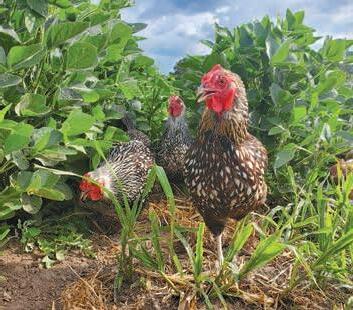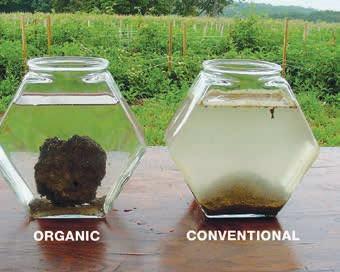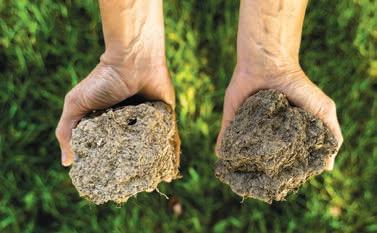
2 minute read
The Promise of Regenerative Organic Agriculture
Led by the Regenerative Organic Alliance, which includes organizations and brands like Rodale Institute, Dr. Bronner’s and Patagonia, the Regenerative Organic Certified farms and products meet the highest standards in the world for soil health, animal welfare, and farm worker fairness. The idea is to create farm systems that work in harmony with nature to improve quality of life for every creature involved. The Regenerative Organic Certified framework is designed to go above and beyond the USDA Certified Organic seal. To date, 134 farms and more than 47,000 smallholder farmers totaling almost 880,000 acres are Regenerative Organic Certified. Nearly 100 brands offer Regenerative Organic Certified products on the market. Under Regenerative Organic Certified standards, soil health is promoted by including a variety of rotating crops, cover crops, no tillage, no synthetic inputs, no genetically modified seeds and rotationally grazed animals. Farms that follow these protocols become biodiverse ecosystems with organically rich soil that absorbs water, does not erode over time and produces safe, nutritious food. Learn more at RegenOrganic.org.

Advertisement
hands dirty. He is currently conducting a study to find out how giving children two hours of outdoor learning a day can impact their metabolic health and help them avoid diseases. According to Kittredge, playing in the dirt isn’t just for kids. “It is beneficial to expose ourselves to soil microbes,” he says. “Everyone should nature bathe.”
“Exposure to soil microbes, like Mycobacterium vaccae, can positively impact our physical and mental health,” says Kathleen DiChiara, a Functional Diagnostic Nutrition practitioner and digestive wellness educator. “We are losing diversity and not getting the exposure we used to.” She points out that the gut microbiomes of urban citizens in the U.S. have lower bacterial diversity than those in rural societies, including hunter-gatherers from Tanzania and the Amazon.
While diet, lifestyle and genetics play a role in the host-specific differences, the microbiome composition in adults is also based on exposure to microbes in the environment. According to DiChiara, there is no perfect profile for the gut microbiome, and our gut microbial communities ebb and flow. “If a specific strain of bacteria suddenly disappears, perhaps due to an illness, another species can take on its task,” she explains. “Like nature, it’s about working together on our behalf.”
Diversity, richness and symbiotic behavior of the gut microbes are central to our well-being. DiChiara notes that many variables can negatively impact the gut microbiome. Some result from the choices we make voluntarily, such as smoking, drinking too much alcohol, eating ultraprocessed foods, being chronically stressed and leading a sedentary lifestyle. Other factors are beyond our control, such as neurological injuries, illnesses and hormonal shifts due to puberty or menopause.
Human Impact on Soil Health


The soil microbiome and the gut microbiome both need our support to maintain proper health. Although our gut microbiome may not be directly impacted by the health of soil microbes, it can be impacted by the pesticides, herbicides and fungicides in our food.
Degradation of the soil microbiome occurs in many ways. Tillage, bare soil, dry soil, fertilizer, chemical sprays and fungicides all harm the soil microbiome. These non-regenerative agricultural practices can have negative impacts on the health of individuals that eat the plants and on the health of the broader ecosystems.
Chemicals like glyphosate can damage the gut microbiome by creating oxidative stress, which agitates the microbiome and impedes its ability to function properly. Pesticides can also have a detrimental impact on the gut microbiome. Each year the United States uses 1 billion pounds of pesticides that may be damaging our bodies when we eat our veggies. “What we are not doing is prioritizing protecting the microbiome—for us and the soil. It’s time we recognize the interconnections between climate, soil and the gut,” DiChiara says.
There are multiple ways we can cultivate a closer, healthier relationship between our soil and our gut, such as supporting sustainable agriculture, avoiding processed foods, frequenting farmers markets for organic produce or spending time in nature. Better yet, Kittredge suggests planting a pesticide-free garden at home and eating carrots straight from the soil.










